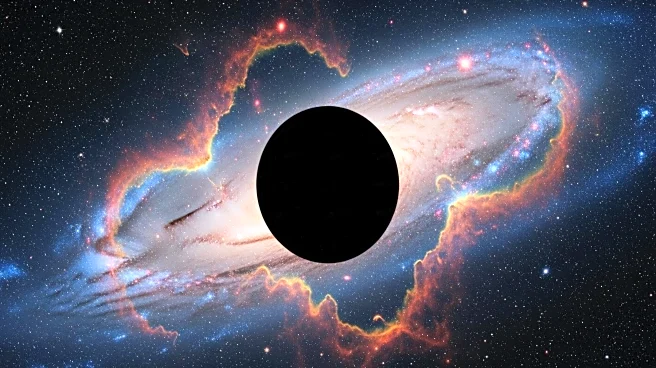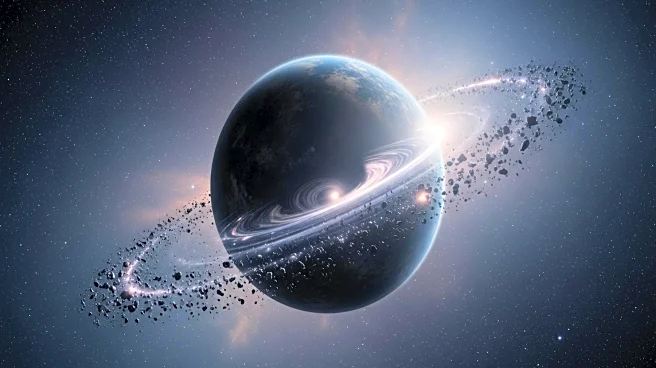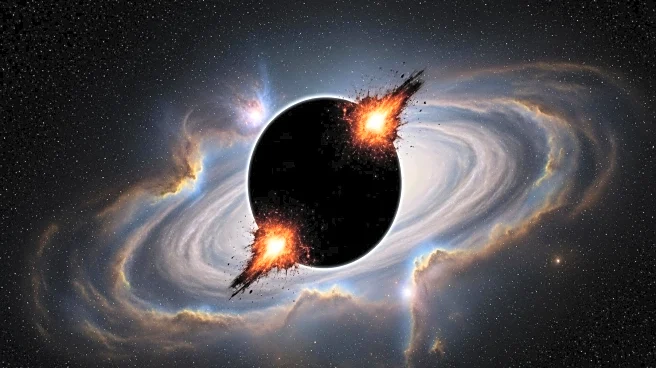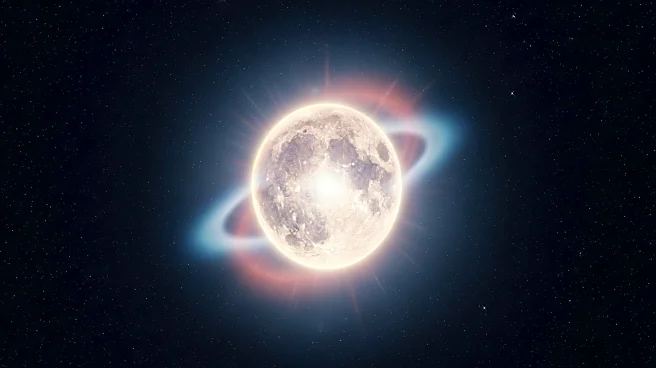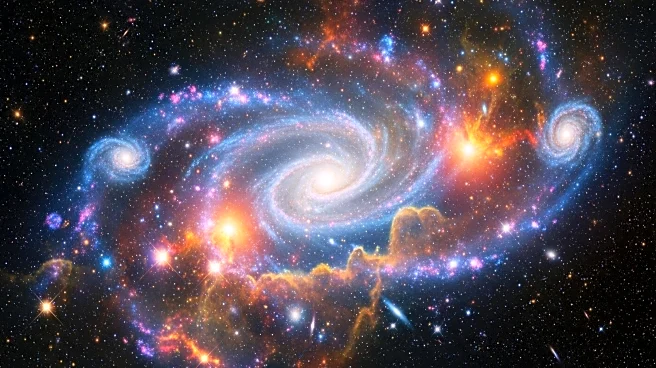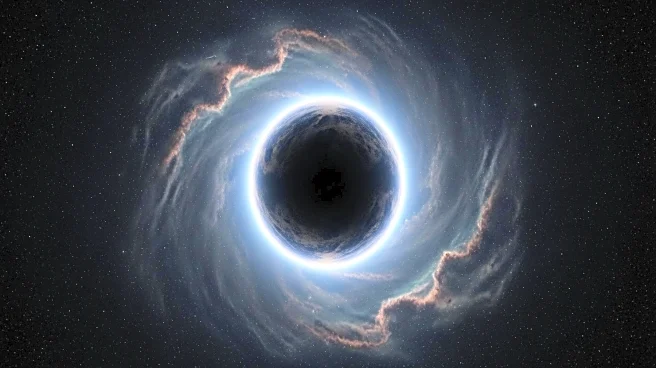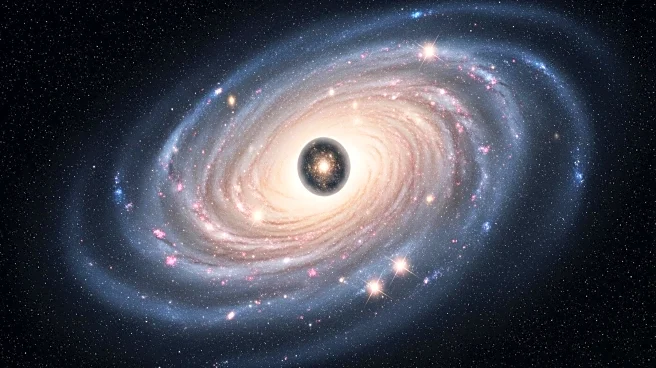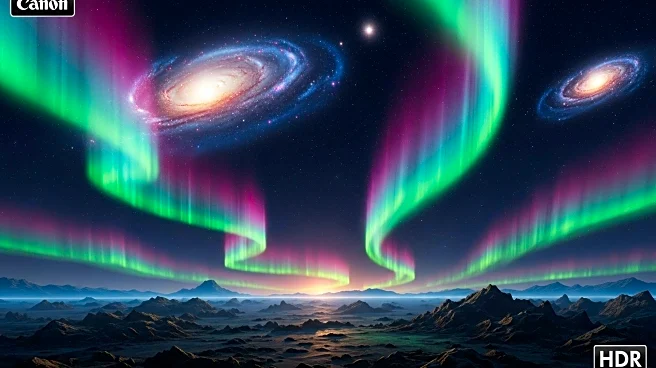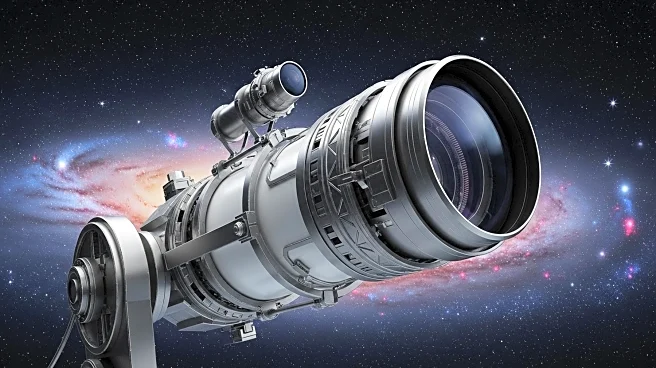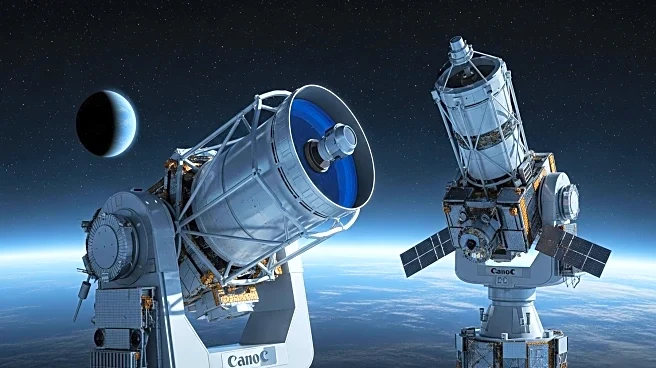What's Happening?
Astronomers have observed a rogue planet, Cha 1107-7626, consuming 6 billion tons of gas and dust per second, a rate that challenges the distinction between planets and stars. This rogue planet, located in the constellation Chamaeleon, is about 620 light years from Earth and is estimated to be 1 to 2 million years old. Unlike planets in our solar system, rogue planets are not bound to any star and drift freely through space. The planet's rapid growth was detected using the European Southern Observatory's Very Large Telescope, revealing a process similar to star formation.
Why It's Important?
The observation of Cha 1107-7626's growth provides new insights into the formation and evolution of celestial bodies. It suggests that some planetary-mass objects may form in a manner akin to stars, challenging existing theories about the origins of planets and stars. This discovery could lead to a broader understanding of the diversity of planetary systems and the processes that govern their development. It also highlights the potential for rogue planets to serve as natural laboratories for studying the early stages of planetary formation.
What's Next?
Researchers will likely continue to monitor Cha 1107-7626 to understand the mechanisms driving its rapid accretion of matter. Further studies may focus on the chemical changes in the surrounding disc, such as the detection of water vapor, to explore the conditions that enable such growth. These findings could inform future models of planetary and stellar formation, potentially leading to new classifications and insights into the nature of rogue planets.
Beyond the Headlines
The discovery of Cha 1107-7626's behavior invites a reevaluation of the criteria used to distinguish between stars and planets. It suggests that the processes governing the formation of these objects may be more interconnected than previously thought, potentially leading to new paradigms in astronomy. This could also impact the search for extraterrestrial life, as rogue planets may offer unique environments that differ from traditional planetary systems.

